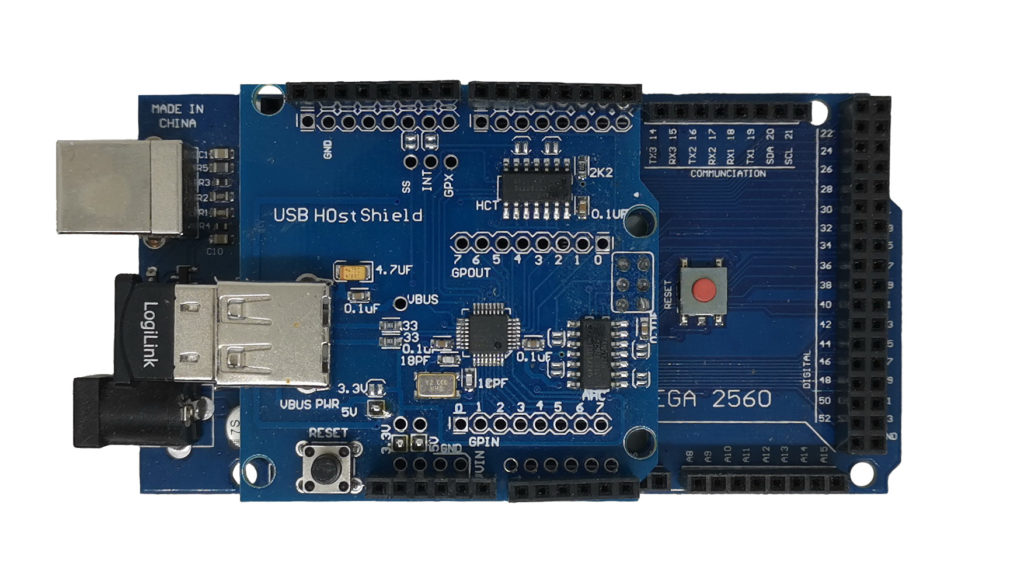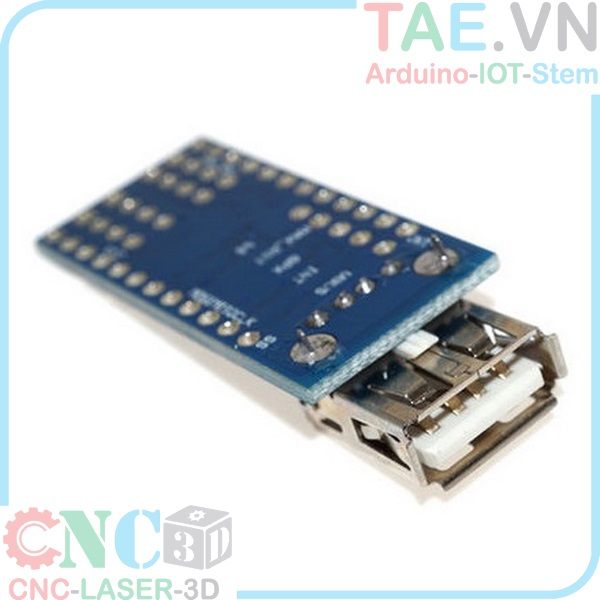

- Sparkfun arduino usb host shield connection how to#
- Sparkfun arduino usb host shield connection serial#
- Sparkfun arduino usb host shield connection drivers#
- Sparkfun arduino usb host shield connection driver#
- Sparkfun arduino usb host shield connection code#
Sparkfun arduino usb host shield connection serial#
and then checking to see if serial data is available. I'm guessing using a FSM coding approach would be best here? constantly polling the keyboard. I fear it might conflict with polling the keyboard?

Sparkfun arduino usb host shield connection how to#
so its not about how to connect them, or parse the serial data.etc Its more about the 'whole' (bigger) picture of implementing this along side of the keyboard/pass-through stuff. and they are fairly simple/straightforward. * I have worked/played a bit with the bluetooth modules. or start this 'lag' behavior over bluetooth. so I figured an HC-05/HC-06 device connected, so I can trigger a certain keyboard layout over BT. * Not sure how this will work or interfere with the polling of the keyboard presses though?Ģ.) I want to be able to trigger certain behavior over bluetooth.

and then loop through displaying them with a 'delay' in between? I guess try to keep an 'array' (collection) of the key presses. Thoughts were: (when in this 'mode/behavior' state). kinda like if you PC is running out of resources, and the keys presses lag, and display on the screen slowly.etc. Other questions I have (after I get step 1 sorted out)ġ.) I am trying to think of a way to 'slow down' the output of the key presses. so that is where I am at, step 1, 'emulating' the keyboard behavior, so it functions normally. I need to get the keyboard to work 'as normal' initially. but am wondering if anyone else has been down this road before?īut seems to not relate to the current state of the Circuits Home library.īefore I move along to the effects/behavior I want to do.

(nothing gets passed along to the end device/PC).įrom my understanding I'd need to use the Keyboard.begin().etc to pass along the data sent to serial monitor. they have a keyboard example that outputs to serial monitor only. I have a regular old USB keyboard connected to it currently, and am looking for examples on how to passively allow the keyboard to pass-through the USB Host shield to the end device (PC or whatever). I have the wiring done and passing all tests. That's it!Ĭonst SS = D10 const USB_NAK_LIMIT = 100 const USB_RETRY_LIMIT = 3 const STATE = let results = usb.controlTransferIn (conf, 1 ) console.log ( 'get configuration:', bytes2hex (results.I have a USB Host shield I am using with a Leonardo. You may need to put a jumper between D7 and the RESET pin. You can then just plug the shield into the Pixl.js. The SparkFun USB host shield does not come with headers, so you have to buy these separately and solder them on. If you look at the 7th to 13th byte, you may notice that it's "VerioIQ" in ASCII. The message consists of the STX control character (0x02), packet length (0x08), link control mask (0x00), read header command (0x0406), ETX control character (0x03) and a two-byte checksum 0x78C1). This message is specific to the Verio IQ blood glucose meter that I connected to the shield. It then initialises the CP2102 chip and sends the message 02 08 00 04 06 03 78 C1
Sparkfun arduino usb host shield connection code#
The current code sets up the USB stack, connects to the device, retrieves the device descriptor and prints the vendor ID and product ID to the screen.
Sparkfun arduino usb host shield connection drivers#
By now posting this to Hackster.io I hope that others will get use out of the code and write drivers for other USB serial chips as well. Then life got in the way and I completely stopped working on the project. Around a month later (26 July 2018) I finally had something working with the Silicon Labs CP2102 chip.
Sparkfun arduino usb host shield connection driver#
I first attempted to write a driver for the TI USB3410 chip, and failed miserably, as this chip requires you to first upload firmware into it before using it. The official Arduino USB host shield uses the ICSP header, so that wouldn't work, but it looked like the SparkFun one just might. A year ago there was a request for proposed Arduino shields to add to Pixl.js and I suggested adding a USB host shield. I have a bunch of different diabetes devices, from blood glucose meters to insulin pumps, that I want to connect to my Pixl.js so that I can display the data on its screen.


 0 kommentar(er)
0 kommentar(er)
